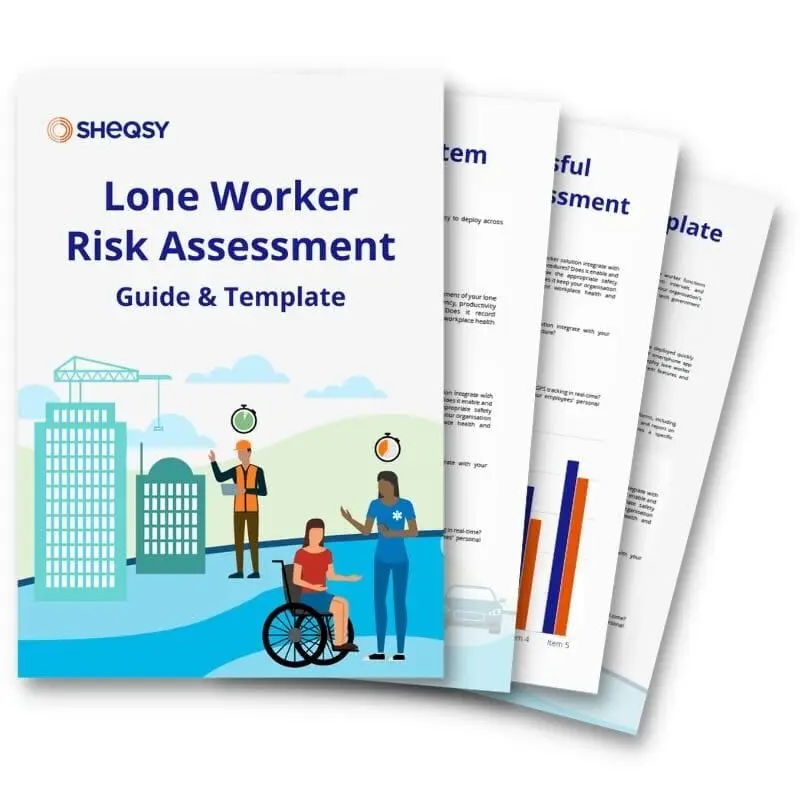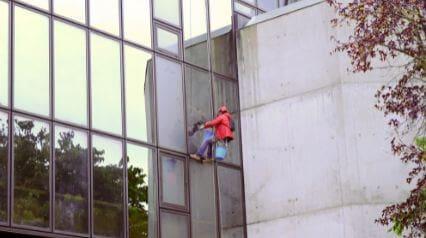What is a Lone Working Risk Assessment Example?
One of the leading causes of workplace injuries, illnesses, and incidents is failing to identify hazards that are present or that could have been anticipated. That is why regularly and proactively identifying hazards, assessing risks, and, ultimately, rectifying any issues immediately are critical elements in your workplace health and safety policies.
Carrying out lone worker risk assessments is one of the fundamental ways employers can reduce their lone workers’ health and safety risks. This article includes a Lone Worker Risk Assessment Template & Guide to help you keep your lone workers safe.
Carrying out lone worker risk assessments is one of the fundamental ways employers can reduce their lone workers’ health and safety risks. This article includes a Lone Worker Risk Assessment Template & Guide to help you keep your lone workers safe.
Lone Worker Risks
Employees who work alone or in isolation face greater safety and health risks than those who do not, because they lack access to immediate back-up support and supervision from managers and other colleagues.
Common examples of lone workers include community nurses and social workers, field workers, plant operators, delivery truck drivers, commercial cleaners, and real estate agents. Each role comes with its own risks, but could include:
- Working in an unknown location
- Working in isolation, away from colleagues
- Experiencing physical violence from clients or other members of the community
- Driving long distances alone
- Working with hazardous machinery
- Experiencing a sudden health emergency (such as a heart attack)
In addition, in the UK, the Health and Safety Executive (HSE) has recorded data regarding lone worker accidents and fatalities. Common lone worker risks include slipping, tripping, falling, using faulty machines, electrocution, not wearing PPE, and unattended medical conditions.
What is a Risk Assessment?
Controlling risks in your workplace is a key part of managing workplace health and safety. Risk assessments are the first step in adequately managing risk.
A risk assessment is the process of thinking about what might cause harm to people and deciding whether your organisation is taking reasonable, doable steps to prevent that harm.
What is a Lone Worker Risk Assessment?
Also called a lone working risk assessment, a lone worker risk assessment is the process of identifying and assessing the workplace hazards and risks associated with a specific lone worker’s responsibilities and tasks.
Completing a lone worker risk assessment is different from a general risk assessment, since lone workers’ environments and situations can change often (when compared to a static office workplace, for example). They should be carried out more regularly and involve a variety of different potential scenarios (such as driving to an appointment, parking in a dangerous neighbourhood, and working inside of a client’s home).
Are Lone Workers Risk Assessments Required by Law?
Generally speaking, employers worldwide are recommended—and often legally required—to safeguard their employees from workplace health and safety risks. Risk assessments are one of the most basic safety procedures that every employer should carry out regularly.
For example, in Australia, organisations must:
- provide a safe work environment;
- provide and maintain safe machinery and structures;
- provide safe ways of working;
- ensure safe use, handling and storage of machinery, structures, and substances;
- provide and maintain adequate facilities;
- provide any information, training, instruction or supervision needed for safety; and
- monitor the health of workers and conditions at the workplace.
In the UK, under the Management of Health and Safety at Work Regulations 1999, employers must:
- identify what could cause injury or illness in your business (hazards);
- decide how likely it is that someone could be harmed and how seriously (the risk); and
- take action to eliminate the hazard, or if this isn’t possible, control the risk.
Meanwhile, in the USA, the Occupational Safety and Health Administration (OSHA) provides “Recommended Practices for Safety and Health Programs” which include guidelines for hazard identification and assessment.
Without completing detailed lone worker risk assessments, complying with these regulations and recommendations is impossible.
8 Steps in a Successful Lone Working Risk Assessment
-
- Identify the hazards: Complete the process of finding, listing, and characterising hazards that could cause harm to your lone workers. Learn more about how to identify hazards in the workplace.
- Evaluate who (or what) might be harmed and how: Could any lone workers (or other people, animals, or property) be harmed in the particular work environment, situation, strategy, or task? If so, how?
- Analyse the likelihood and severity of potential incidents: What is the level of risk involved in the particular work environment, situation, strategy, or task? How likely is it that an incident might occur? How serious might these incidents be?
- Determine how to minimise the risks and mitigate any hazards: Once all of the potential hazards and risks have been identified, determine the steps that must be taken to safeguard your lone workers.
- Implement new policies, processes, and procedures: Whenever a new hazard or risk is identified, every practicable measure should be taken to mitigate or eliminate it. That includes creating new working alone procedures, processes, and policies.
- Train your workforce: Lone workers must be made aware of any new policies, processes, and procedures and receive the training they need to abide by them.
- Record significant findings: Generate a detailed report of your significant findings that can be referred back to whenever necessary.
- Regularly review your lone worker risks: New hazards and risks might arise often. While there are regulations that recommend an annual review of risk assessments, employers should regularly schedule and carry out lone worker risk assessments to ensure they are aware and in control of lone worker risks.
Remember: Lone worker risk assessments do not need to be completed alone. They can (and should) involve relevant managers and lone workers so that they can share their insights and first-hand experiences.
Lone Working Risk Assessment Example Template
There can be many ways to create a lone working risk assessment, even if you follow the 8 steps mentioned above. It will all depend on the industry you are a part of, your daily tasks, and your goals.
However, a typical lone working risk assessment example template will have the following elements:
- Company name:
- Job role:
- Department:
- Date of assessment:
- Employee(s) completing assessment:
- Date of next assessment:
- Background information:
- Hazards:
- Specific associated risks:
- Level of risk:
- Who/what might be harmed?
- What safeguards are already in place?
- How can the risks be minimised?
- Who is responsible?
- Due date?
- Date completed?
A detailed version of this lone worker risk assessment example can be found in SHEQSY’s Lone Worker Risk Assessment Template & Guide here.

[sc_marketo_form id=”1499″]
SafetyCulture (iAuditor): Tools to Carry Out Lone Worker Risk Assessments
When it comes to carrying out lone worker risk assessments, using a digital auditing tool like SafetyCulture can help you easily identify, rectify, and monitor occupational hazards via customizable inspection and risk assessment forms, fast reporting, and actionable insights.
With SafetyCulture, you can:
- Convert, create, and customize inspection templates
- Receive notifications in real-time and assign corrective actions to key personnel
- Generate reports instantly and utilize actionable insights for continuous improvement
SHEQSY: Tools to Safeguard Lone Workers
Once you complete your risk assessment with SafetyCulture, you may find that the easiest and most affordable way to safeguard your lone workers is with a lone worker safety solution. Ideally, you should deploy a solution that can be customised to suit your organisation’s unique lone worker policies, management processes, and lone worker procedures.
SHEQSY is the leading lone worker safety solution that protects employees in real-time and makes it easy to manage, monitor and report on lone worker activities from one user-friendly dashboard.
SHEQSY can be simply deployed across your lone workforce as a smartphone app (iOS/Android), protecting employees in real-time with simple and discreet duress activation, periodic check-ins, and overtime alerts.
In addition to the smartphone app, SHEQSY integrates Bluetooth wearables and handheld satellite devices to deliver a truly enterprise-grade safety solution.
Employees can submit near-miss, hazard, and incident reports (accompanied by images and videos) in real-time. Meanwhile, SHEQSY records all historical lone worker data (such as dates, times, locations, work activities, pre-start form responses, location notes, hazard reports, and more) and stores it in the SHEQSY Management Dashboard. The ability to run detailed reports is invaluable when completing lone worker risk assessments.



